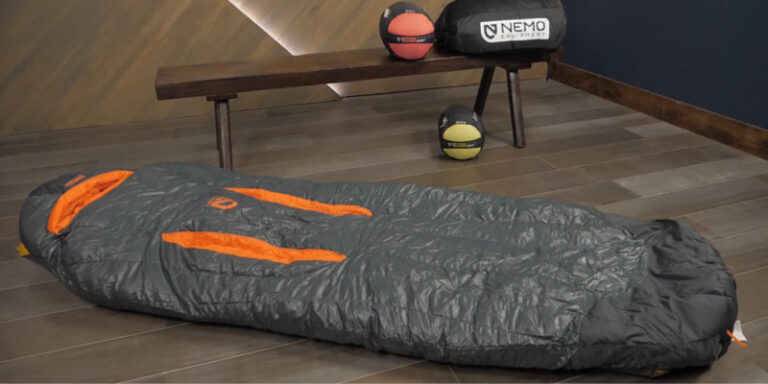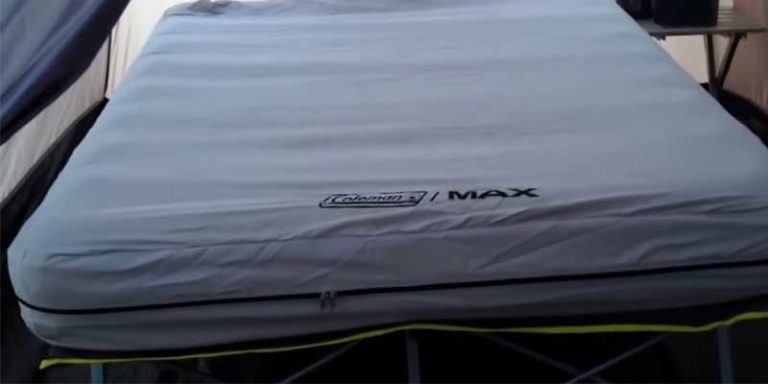Rooftop tents are a great way to camp in comfort and style. They lift you off the ground and offer better views. Setting up is quick and easy, making them perfect for road trips. In the UK, where the weather can change fast, a good rooftop tent keeps you dry and warm. There are many options, from lightweight designs to heavy-duty models. Some are great for small cars, while others fit large 4x4s. Choosing the right one can be tricky. That’s why we’ve made this guide. We’ll show you the best rooftop tents in the UK. Whether you camp often or just a few weekends a year, we have you covered.
1. TentBox GO

- Weight: 33.11 kg
- Setup Time: Under 5 minutes
- Sleeping Capacity: 2 adults
- Dimensions (open): 210cm x 120cm x 90cm
The TentBox GO is a lightweight and flexible rooftop tent designed for easy travel. It is one of TentBox’s most affordable options but still offers excellent quality. The GO is simple to mount on almost any car roof. It folds out smoothly and sets up in minutes, making it ideal for weekend adventures. Its compact design also helps with fuel efficiency while driving.
Inside, you’ll find a cosy space with a soft mattress included. The weatherproof materials do a great job of keeping rain and wind out. Although it is smaller than other TentBox models, it feels roomy for two people. If you want something lightweight, quick to set up, and budget-friendly, the GO is a brilliant choice.
Pros:
- Very lightweight and easy to handle
- Fast setup and pack down
- Good value for money
- Fits most cars easily
Cons:
- Smaller sleeping area
- Not as insulated for very cold weather
2. TOMOUNT SUV Tent Family Camp Car Tent

- Weight: 8.7 kg
- Setup Time: 10 minutes
- Sleeping Capacity: 3–4 people
- Dimensions (open): 300 x 300 x 210 cm
The TOMOUNT SUV Tent is built for families or groups who need extra space. This rooftop tent attaches securely to SUVs and larger vehicles. It offers a huge sleeping area that fits three to four people comfortably. The structure feels strong, with heavy-duty waterproof fabric and a thick mattress for added comfort.
Its setup is a bit slower than some other models, but the extra space makes it worth the wait. Windows and mesh panels provide great airflow and help control condensation. If you are looking for a rooftop tent that fits your whole family without feeling cramped, the TOMOUNT SUV tent is a fantastic choice.
Pros:
- Very spacious interior
- Strong waterproof construction
- Good ventilation
- Great for families or group trips
Cons:
- Heavier and bulkier than others
- Takes longer to set up
3. TentBox Lite

- Weight: 59 kg
- Setup Time: Under 5 minutes
- Sleeping Capacity: 2 adults + 1 child
- Dimensions (open): 38.1 x 132.08 x 220.98 cm
The TentBox Lite is one of the best options for campers wanting a blend of comfort and convenience. It folds out into a roomy, comfortable sleeping space and is designed to fit most vehicles. Made from durable, waterproof materials, it protects you from the worst UK weather.
Inside, it feels bright and airy thanks to its multiple windows. The included mattress is soft enough for a good night’s sleep. It’s lightweight but still sturdy against strong winds. Plus, the quick setup means you can relax more and work less when you reach camp. Overall, the TentBox Lite is a fantastic all-rounder.
Pros:
- Lightweight and easy to install
- Fast and simple setup
- Great weather protection
- Good ventilation
Cons:
- Not ideal for very large families
- Fabric can flap in very strong winds
4. Thule Foothill

- Weight: 3.63 kg
- Setup Time: 7–8 minutes
- Sleeping Capacity: 2 adults
- Dimensions (open): 213cm x 119cm x 91cm
The Thule Foothill is a clever, space-saving rooftop tent. When packed, it folds down small, leaving room for bikes, kayaks, or storage on your roof rack. This makes it perfect for people who love mixed adventures. Despite its compact size, it opens up into a surprisingly comfortable space for two adults.
The high-quality materials offer strong protection from rain and wind. It feels durable and stable even in rougher weather. Inside, the mattress is comfy, and the mesh panels let in fresh air while keeping bugs out. If you want flexibility and space on your roof for other gear, the Foothill is a top choice.
Pros:
- Compact when packed
- Leaves room for extra roof gear
- Excellent build quality
- Good ventilation
Cons:
- Slightly smaller sleeping area
- Setup takes a bit longer than pop-up models
5. BOOMLATU Shell Wing Inflatable Floatable Rooftop Tent

- Weight: 36 kg
- Setup Time: 3–4 minutes (inflation)
- Sleeping Capacity: 2–3 people
- Dimensions (open): 220cm x 130cm x 100cm
The BOOMLATU Shell Wing is a unique inflatable rooftop tent. Instead of using traditional poles, it inflates in minutes, saving you time and effort. The tent material is waterproof and rugged, designed to survive heavy rain and strong winds. It is also floatable in emergencies, adding an extra layer of safety for some trips.
Inside, the space is perfect for two adults and a child. The mattress is included and quite comfortable for longer stays. With a tough shell and quick setup, it’s great for campers who want something fast, innovative, and reliable. It’s especially useful in bad weather when you need to set up quickly.
Pros:
- Extremely fast setup with inflation
- Waterproof and rugged design
- Unique floatable safety feature
- Spacious inside
Cons:
- Needs an air pump (included)
- Pricier than regular pole tents
How to Rooftop Tent in the UK
Rooftop tents have exploded in popularity across the UK over the last few years. Whether you’re looking for a spontaneous weekend getaway or a full-on overlanding adventure, sleeping on top of your vehicle has a certain rugged charm. It’s a unique way to camp, blending comfort, mobility, and a touch of adventure.
But if you’re new to it, you might wonder: how do you rooftop tent in the UK? This guide will break it down step-by-step, from choosing the right gear to finding perfect camp spots.
1. Choosing the Right Rooftop Tent
First things first: you need the right rooftop tent for your vehicle and needs.
- Soft-shell tents are lighter, usually cheaper, and fold out like a clamshell. They’re great for mild weather and quick trips.
- Hard-shell tents are more durable, quicker to set up, and better in bad weather, but they’re heavier and more expensive.
Make sure the tent fits your car’s roof dimensions and weight limits. Check the dynamic load rating of your vehicle (the weight it can carry while moving) and the static load rating (the weight it can hold while parked). You’ll find these figures in your car manual or online.
Popular brands in the UK include iKamper, RoofBunk, TentBox, and Freespirit Recreation.
2. Installing a Roof Rack
You can’t just strap a rooftop tent to any old roof.
You’ll need a strong roof rack system — not just factory-installed bars (unless they’re rated for heavy loads). Look for heavy-duty crossbars like Thule, Rhino-Rack, or Front Runner systems.
Installation is usually straightforward:
- Fit the roof bars according to instructions.
- Bolt the rooftop tent’s mounting brackets to the bars.
- Tighten everything securely.
Make sure you double-check the mount points before you hit the road. Vibrations can loosen bolts over time, so carry a spanner set with you just in case.
3. Packing for the UK Weather
British weather is famously unpredictable — sunshine one minute, downpour the next.
Here’s a basic rooftop tent kit list for the UK:
- 4-season sleeping bags or thick duvets
- Memory foam mattress topper (for extra warmth and comfort)
- Waterproof duffel bags for your clothes and gear
- Windproof, waterproof jackets and boots
- Portable heater (like a gas or electric camping heater, depending on your setup)
- Extra guy ropes and stakes for securing the tent in strong winds
Even in summer, nights can get cold and damp. Always pack for worse weather than the forecast predicts!
4. Where to Camp in the UK
Unlike wild camping with a tent, wild camping with a rooftop tent is a grey area in the UK.
In England, Wales, and Northern Ireland, you technically need the landowner’s permission. Scotland is more relaxed thanks to the Scottish Outdoor Access Code, but even there, respect for private property and local rules is key.
Best rooftop camping options include:
- Campsites that allow rooftop tents (many standard caravan sites do)
- Certified wild camping spots on private land via apps like Pitchup, Cool Camping, and Hipcamp
- National parks with specific permissions (like Dartmoor — but always double-check the latest rules)
Popular spots:
- Lake District — rugged views, lots of small farm sites
- Snowdonia — dramatic mountains and coastal views
- Scottish Highlands — real wilderness experience
Be discreet, leave no trace, and always ask if unsure.
5. Setting Up and Packing Down
Setting up a rooftop tent is usually faster than pitching a ground tent.
Basic setup steps:
- Park your car on flat ground.
- Unlock and release the tent cover.
- Pull open the tent using the built-in ladder.
- Extend and lock the ladder in place.
- Secure the guy lines if it’s windy.
Packing down is just the reverse — but make sure everything is dry before sealing the tent up. A wet tent can quickly become mouldy if left folded for long periods. If you have to pack it wet, open it up again at home to air-dry.
6. Tips for a Great Rooftop Tent Trip
- Plan your fuel stops. In remote areas like northern Scotland or parts of Wales, petrol stations are few and far between.
- Balance your load. Don’t overload your car roof with heavy gear in addition to the tent. Store bulky items inside the car.
- Take a head torch. Hands-free light makes night-time ladder trips much easier.
- Bring levelling ramps. Useful if you can’t find a flat parking spot.
- Mind the height. Your car will be much taller with a tent — check bridge and car park clearance signs.
And finally, embrace the slower pace. Half the fun of rooftop tenting is rolling into a stunning spot, popping the tent open, and soaking in the view with a brew in hand.
7. Legal and Safety Considerations
Insurance:
Some insurers treat rooftop tents as a modification. Inform your insurance company to ensure you’re fully covered, especially if travelling abroad.
Speed limits:
In the UK, cars with rooftop loads should drive slower. Stay below 70 mph on motorways and take it easy on country roads.
Security:
Lock your tent when driving and camping. Some rooftop tents have lockable latches; if not, you can buy padlocks or anti-theft kits.
Breakdown cover:
Make sure your roadside assistance covers vehicles with rooftop tents. If you break down, you may need specialist towing.
8. Final Thoughts
Rooftop tenting in the UK is an incredible way to explore the countryside with a sense of freedom and adventure that traditional camping can’t quite match. It’s perfect for quick weekend breaks or long, slow tours across wild landscapes.
With a little preparation — the right gear, some weatherproofing, and respect for the land — you’ll be ready for unforgettable nights under the stars, all from the cosy comfort of your car roof.
Adventure awaits. The only question is: where will you pop your tent first?



